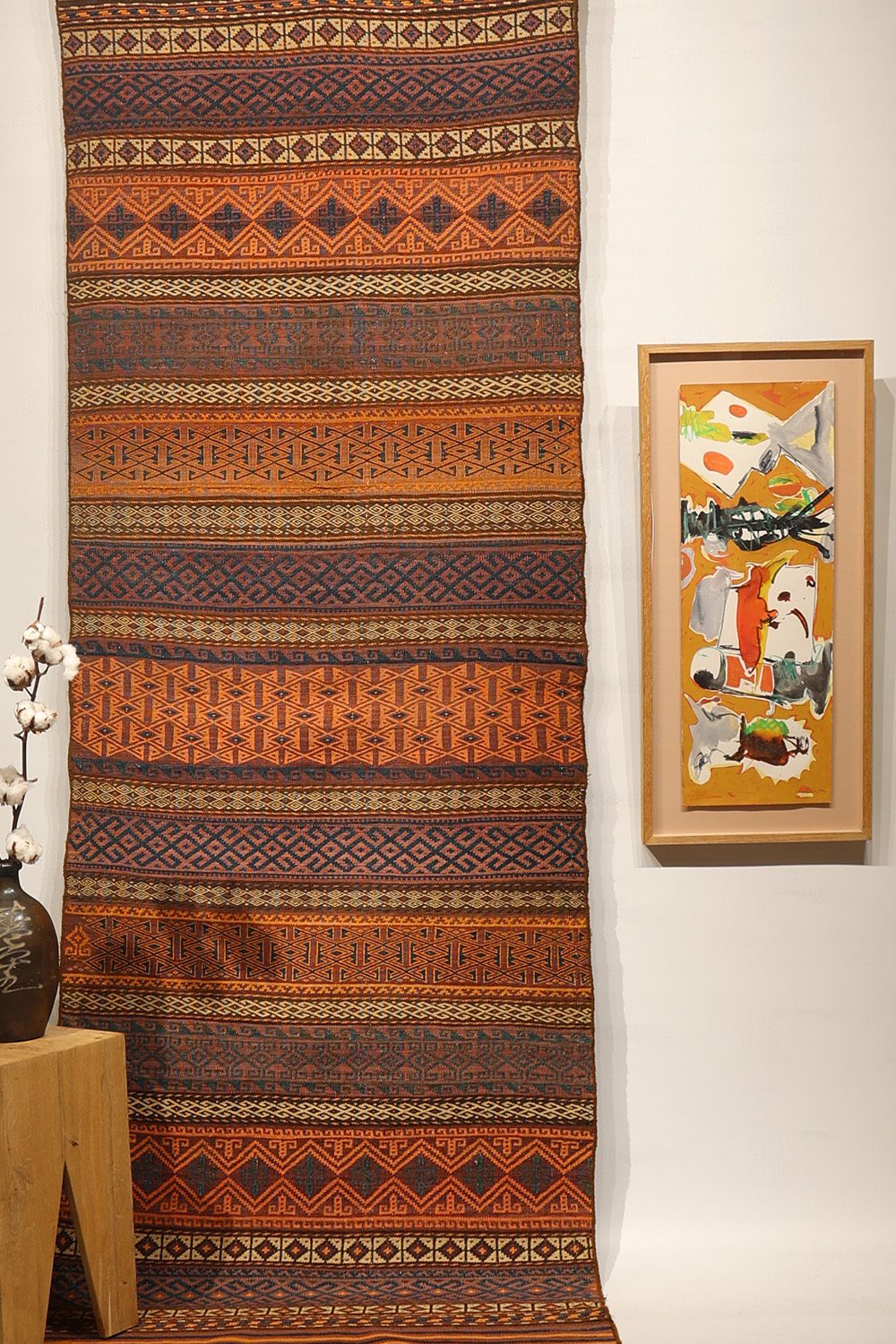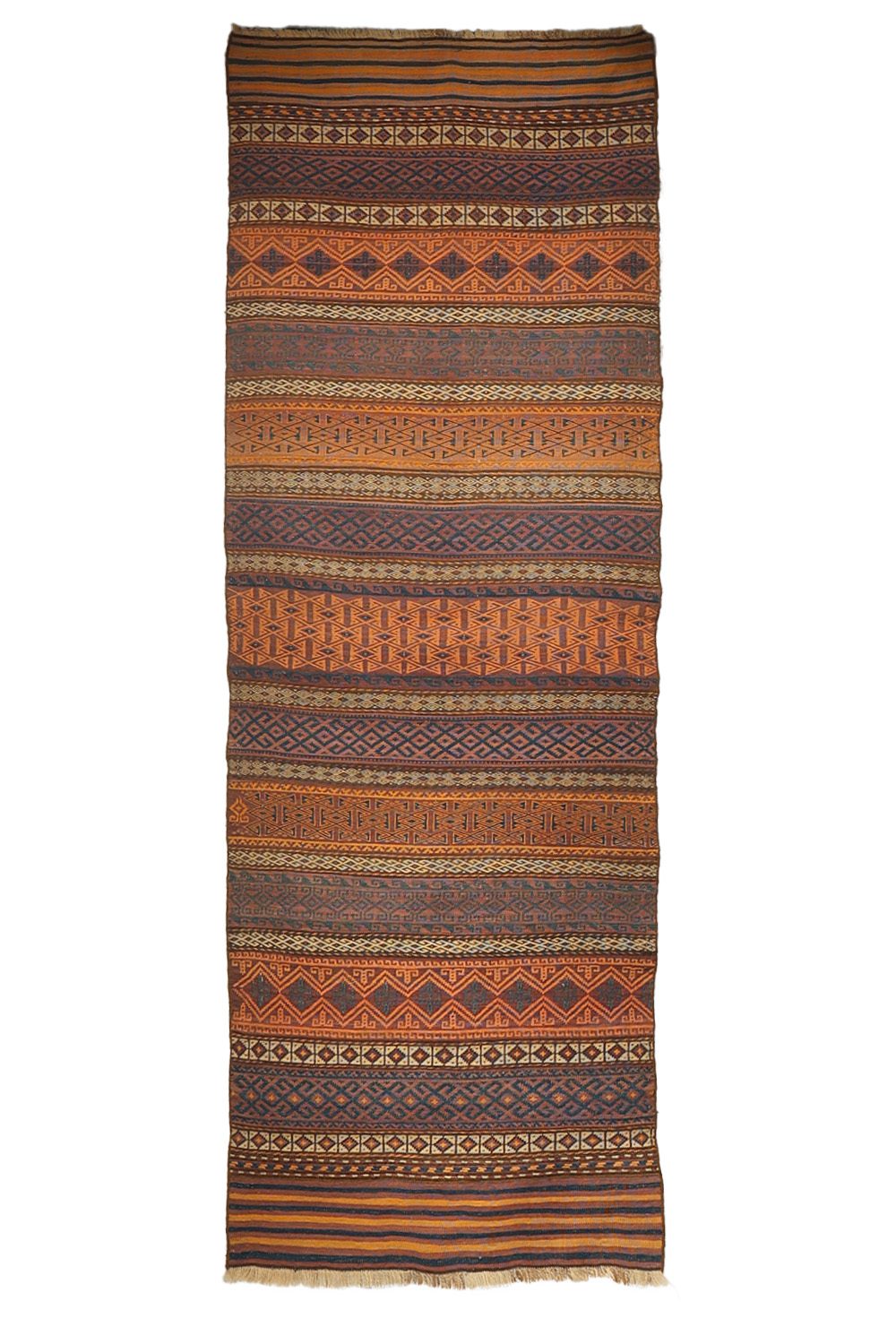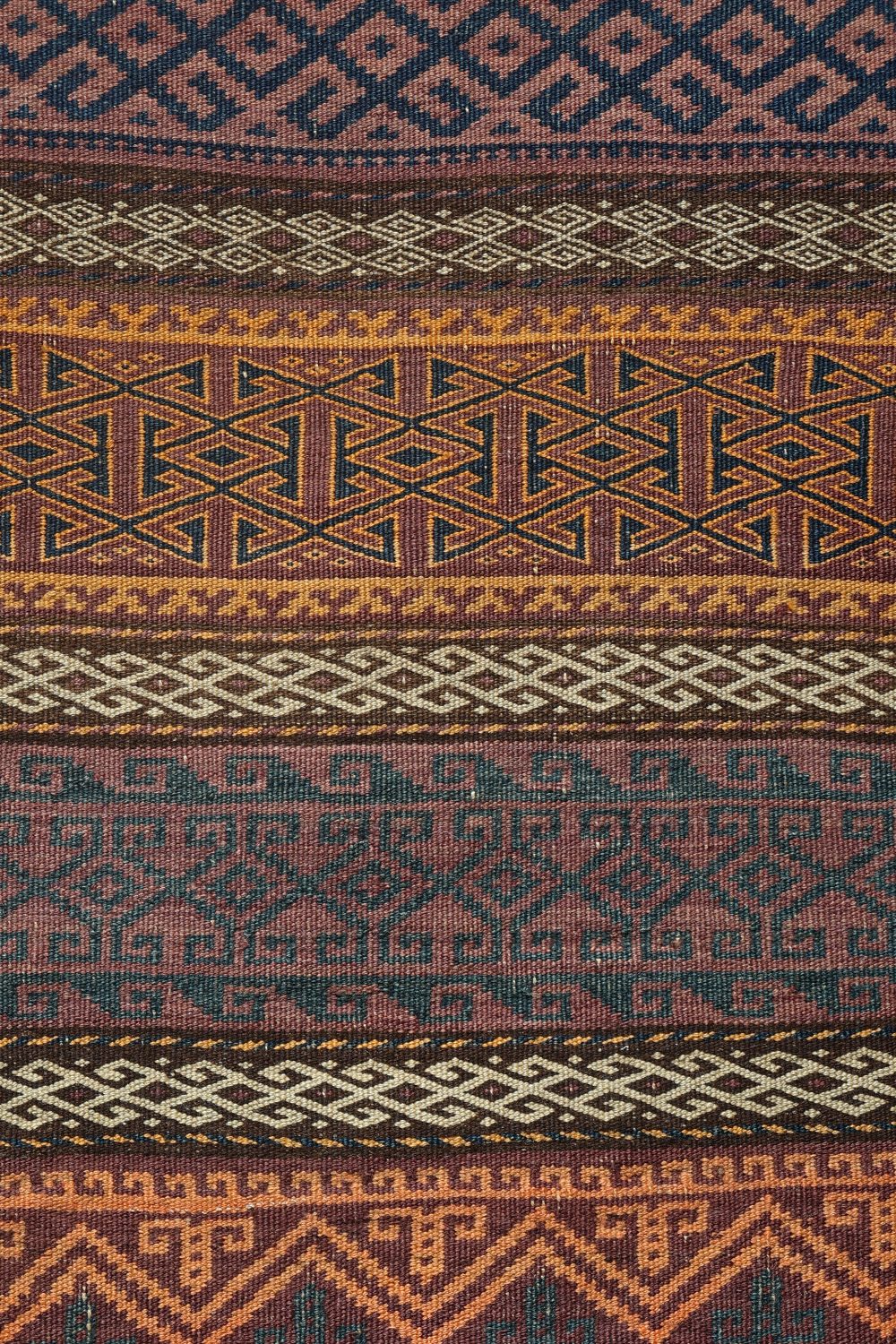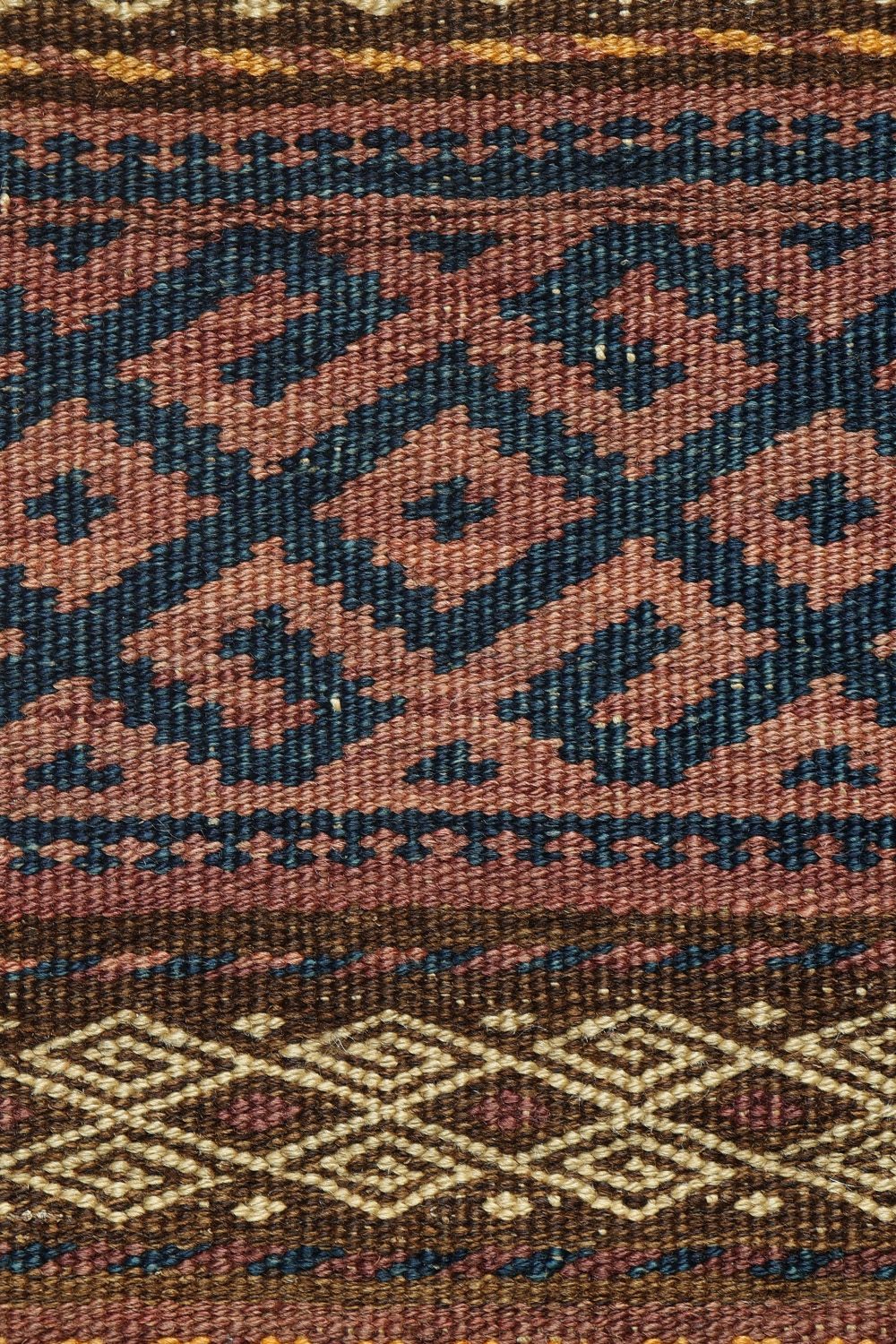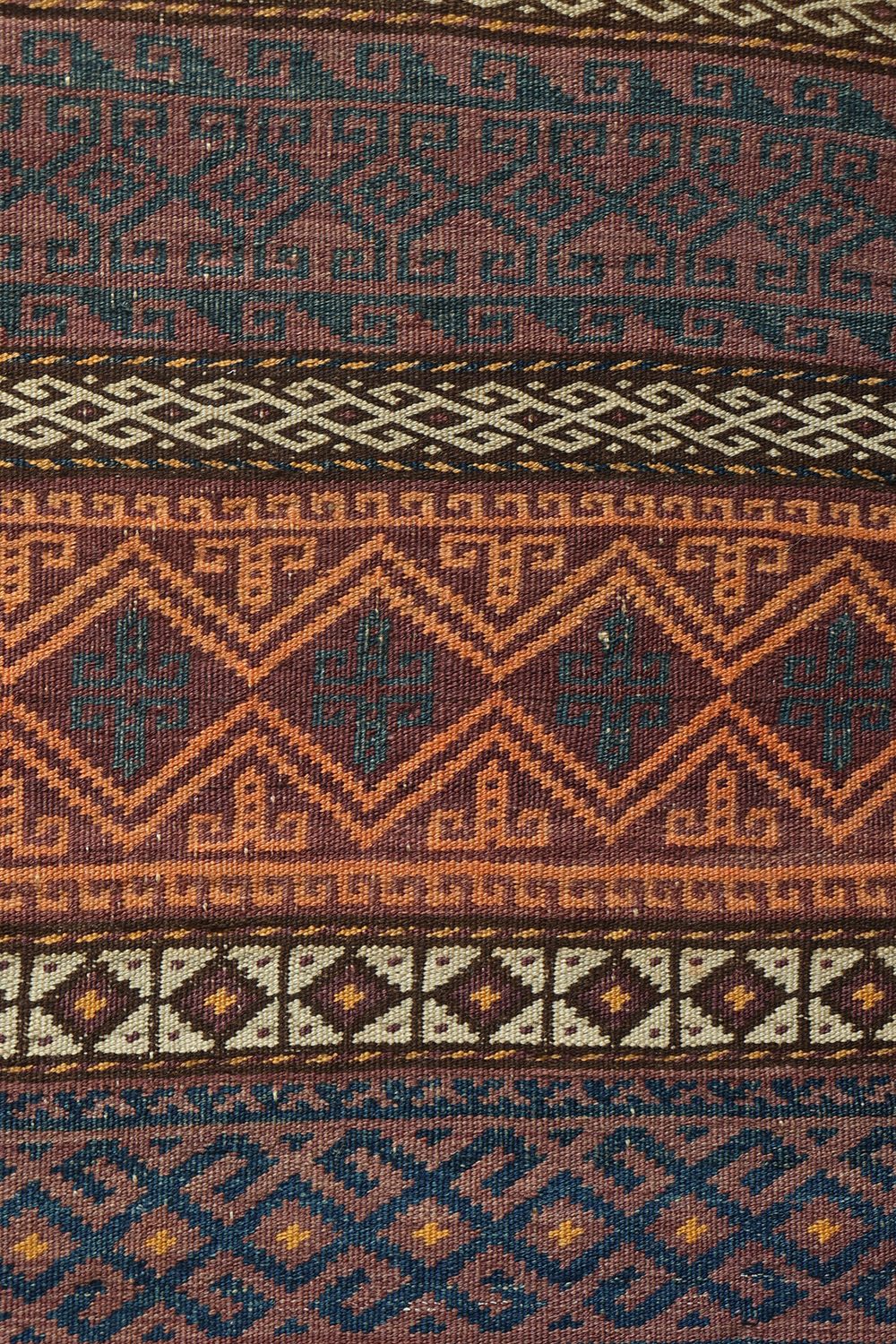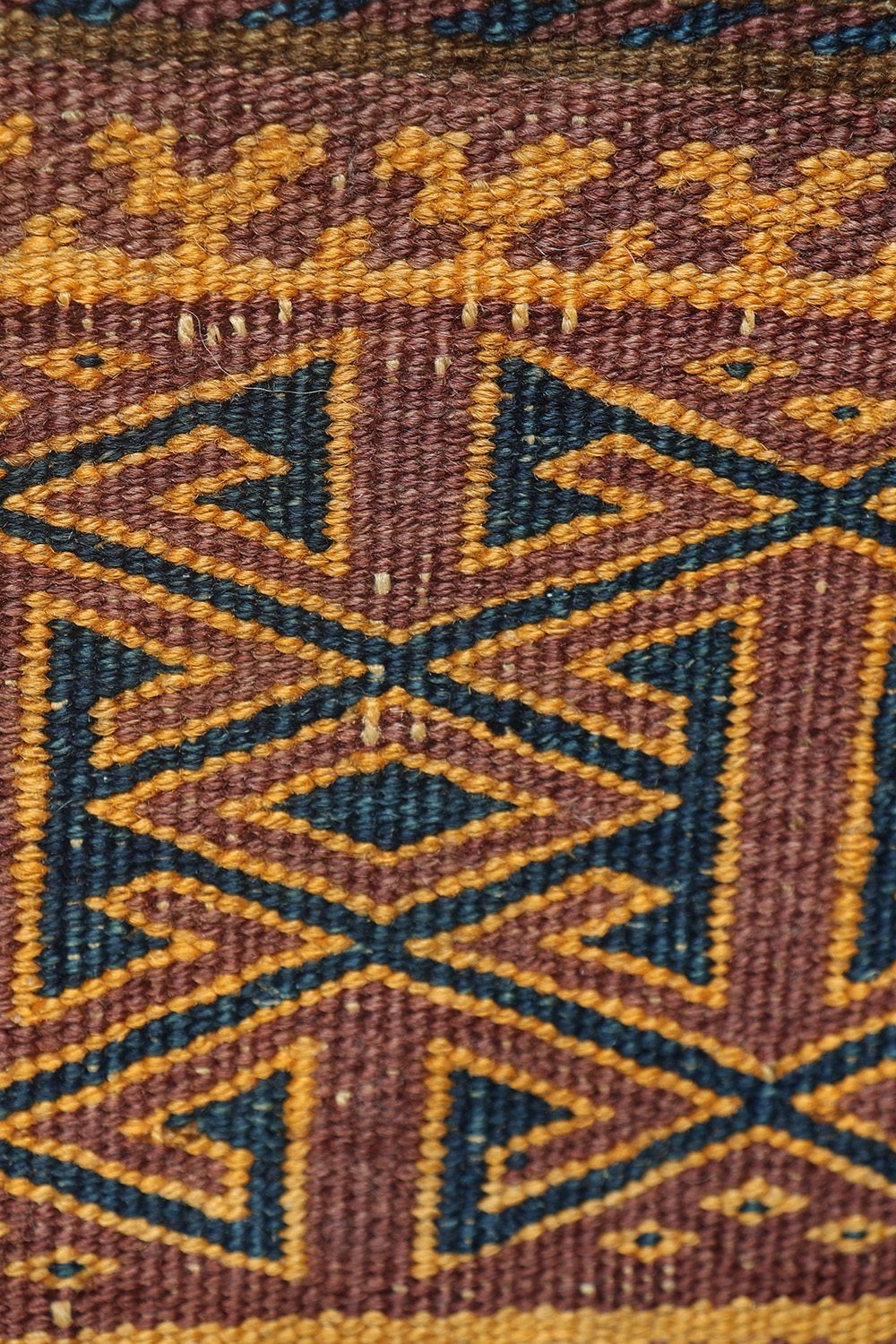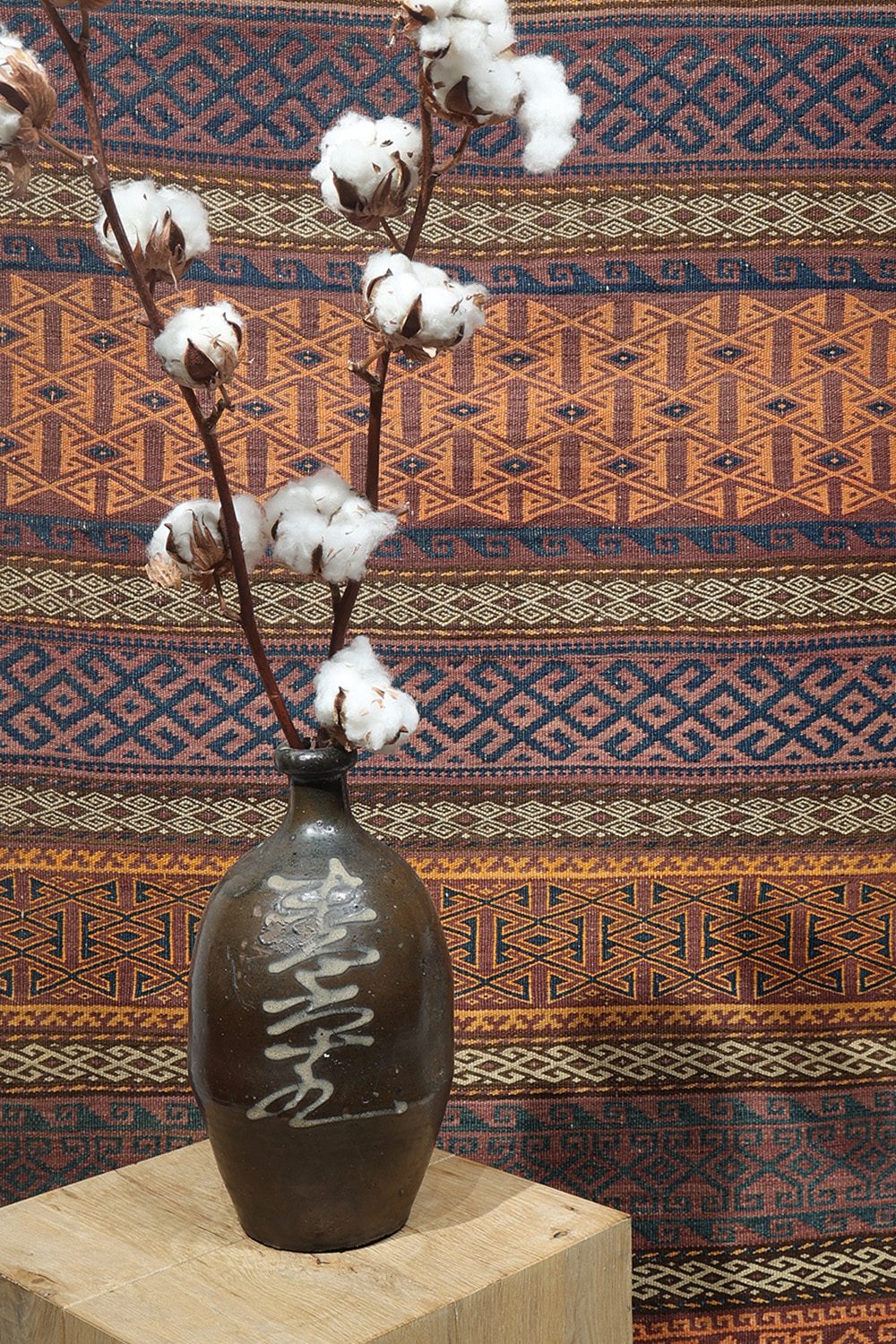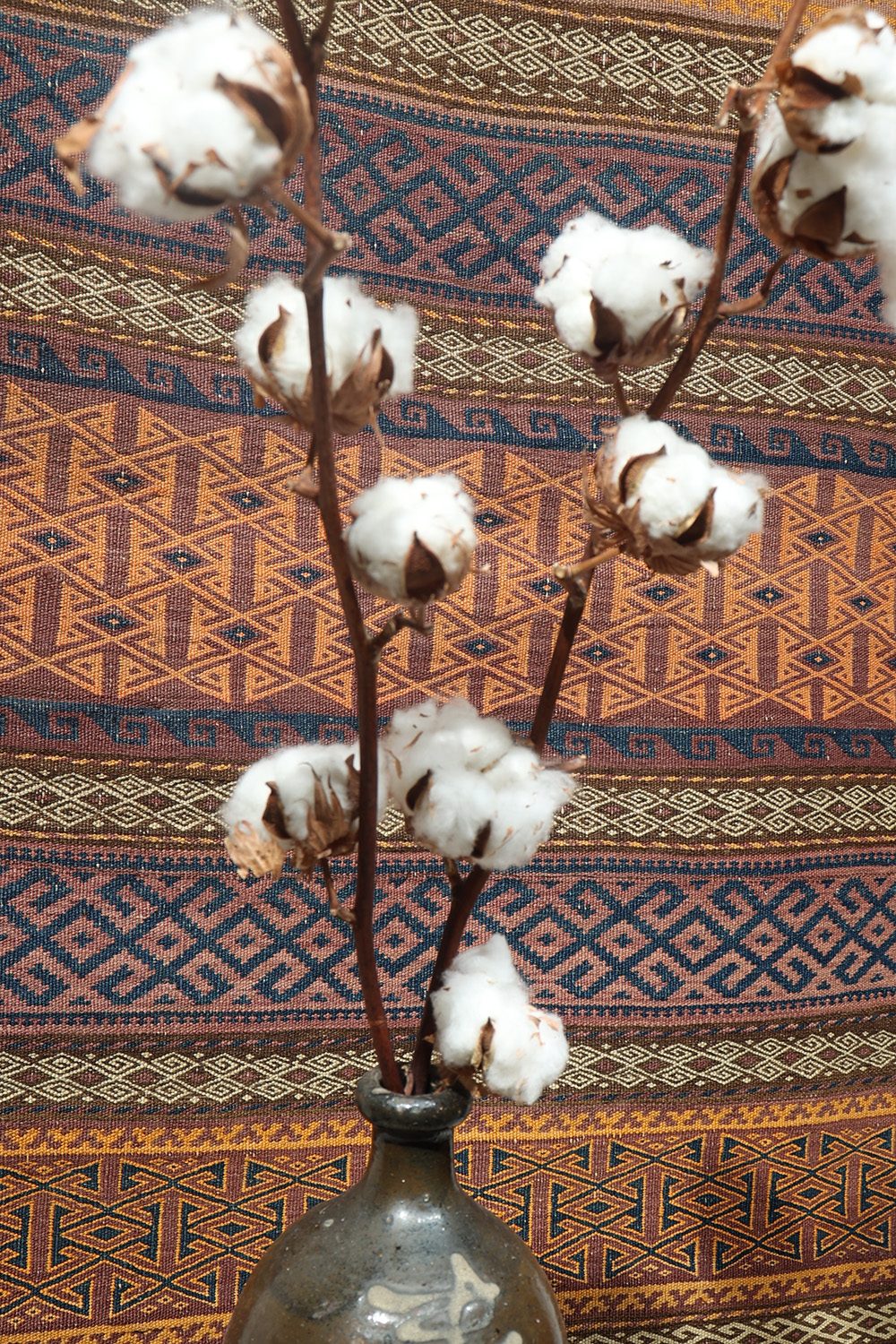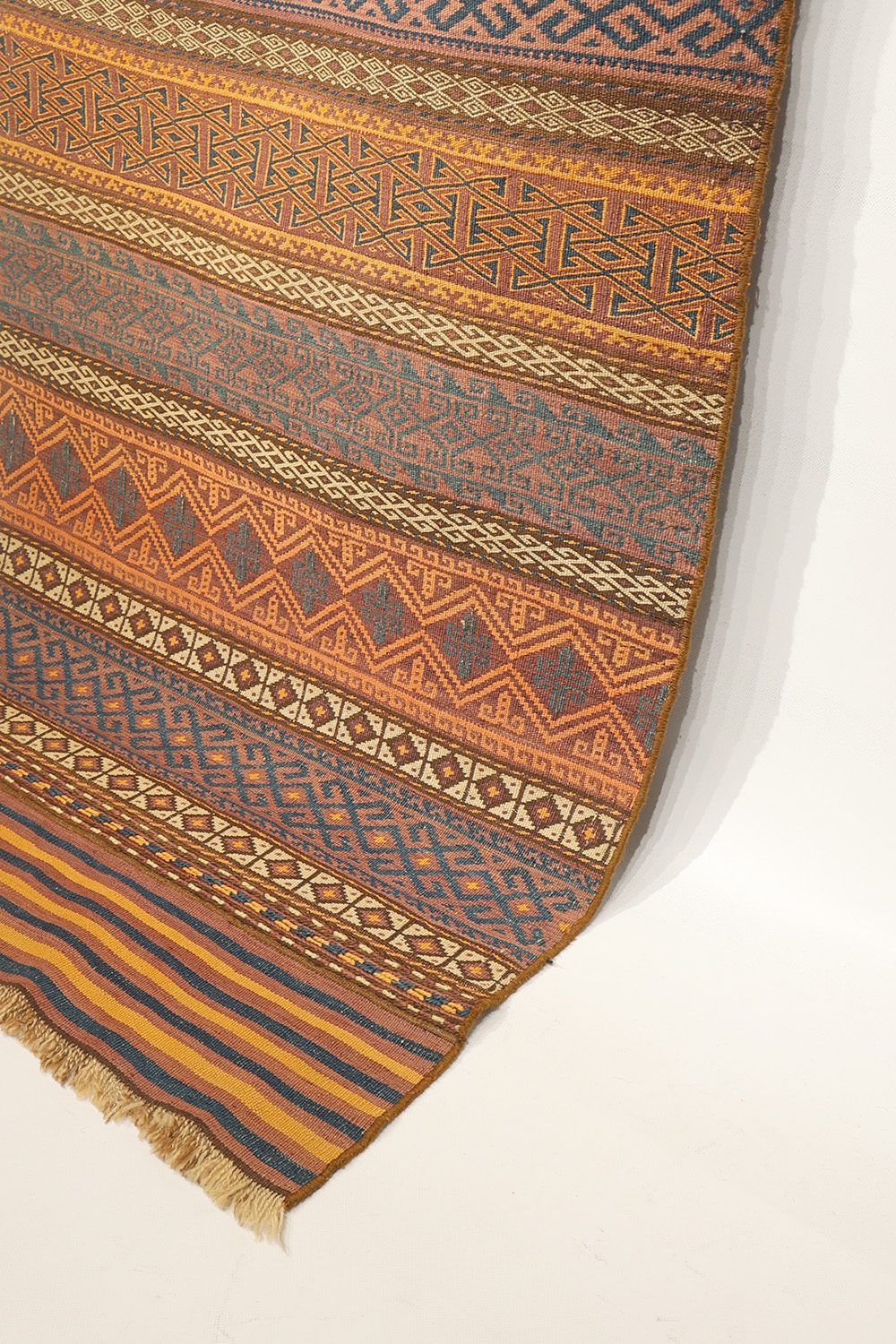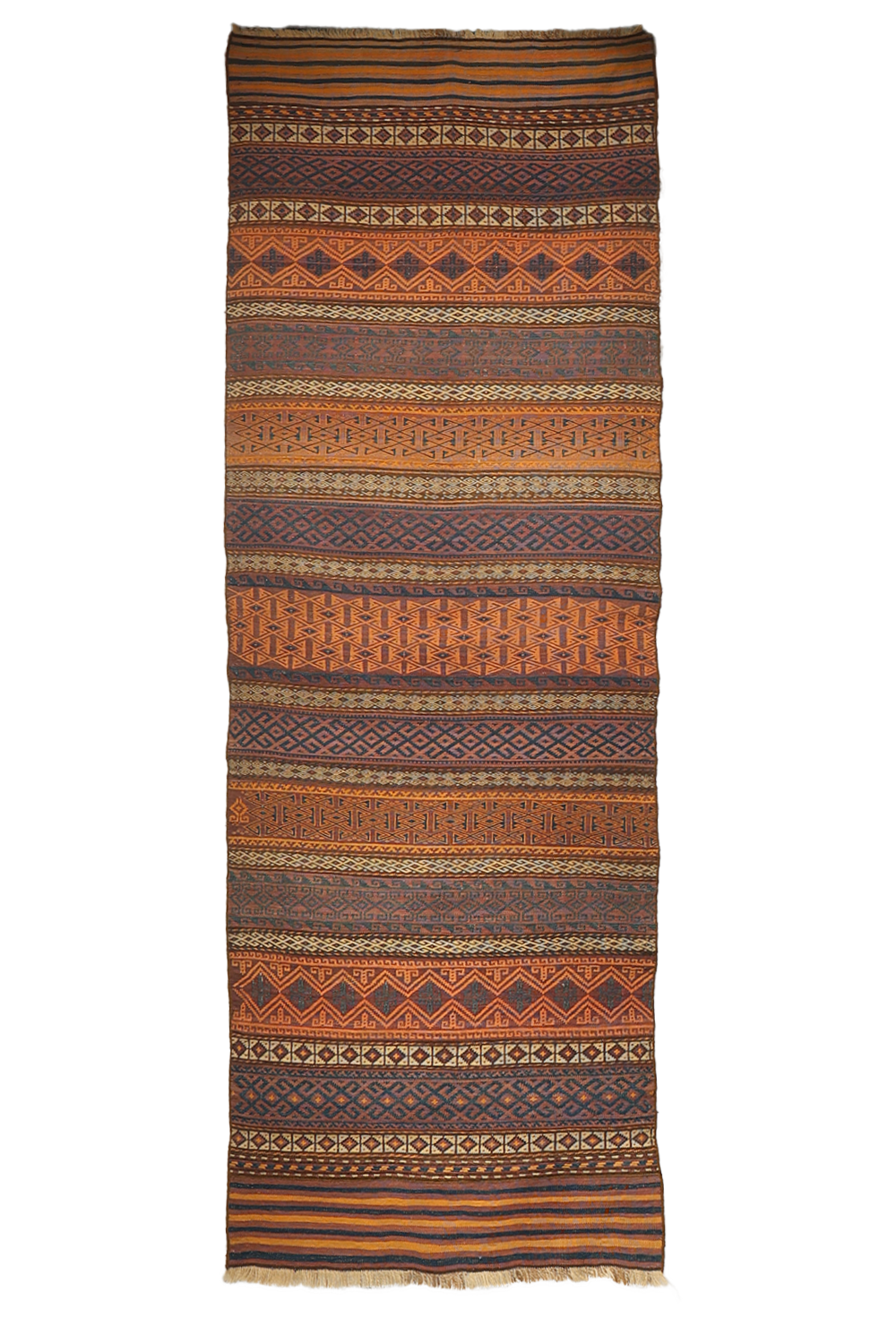A very finelly woven semi-antique Aimaq Baluch kilim. This runner is very finely woven and the design has a very small pattern creating a extremely elaborate and intricate pattern. A robust and sturdy kilim woven partially with natural dyes.
Material: 100% hand-spun sheep wool
Size: 268×88 cms
Origin: Aimaq Baluch tribe, Afghanistan
Date of weaving: 1950s
he Aimaq (Persian: ایماق, romanized: Aimāq) or Chahar Aimaq (چهار ایماق), also transliterated as Aimagh, Aimak and Aymaq, are a collection of Sunni and mostly Persian-speaking nomadic and semi-nomadic tribes.They live mostly in the central and western highlands of Afghanistan, especially in Ghor, Badghis. Aimaqs were originally known as chahar (“four”) Aymaqs: the Taymani (the main element in the population of Ghor), the Firozkohi (mostly in Badghis), the Jamshidi and the Timuri.Other sources state that the Aimaq Hazara are one of the Chahar, with the Timuri instead being of the “lesser Aimaqs” or Aimaq-e digar (“other Aimaqs”).
The Aimaq speak several subdialects of the Aimaq dialect of the Persian language, but some southern groups of Taymani, Firozkohi, and northeastern Timuri Aimaqs have adopted the Pashto language.
Kilims or Gilims are flatwoven textiles with a woollen weft on a woollen, goat hair or cotton warp. There are many different techniques and designs. The weaver normally works within a tradition of techniques, motifs and designs specific to a particular area or ethnic group. The designs relate to her natural surroundings, protection, fertility and the harmony of family relationships. Each weaver adds something from her own creativity and sense of composition. Kilims are often woven as part of a marriage dowry and can be used to create many different objects like storage bags, horse-blankets, baby carriers, blankets and wall and floor coverings.
This kilim was hand-woven on a simple loom by a village or nomadic weaver for her own use. Probably the weaver used wool from her own sheep. The wool was first cleaned, then hand-carded, hand-spun and finally dyed by hand, often using natural dye materials like roots, nuts, berries, fruits, flowers and plants. Kilims from the last quarter of the twentieth century mostly use synthetic dyes. This kilim would have taken many months to complete.
All our kilims selected in the country of origin and are professionally washed and restored before we import them directly from Iran, Turkey and Afghanistan. Natural patina and charming imperfections in design and colour (abrash) are highly valued characteristics of hand-woven kilims.
1 in stock
| Weight | 6 kg |
|---|
